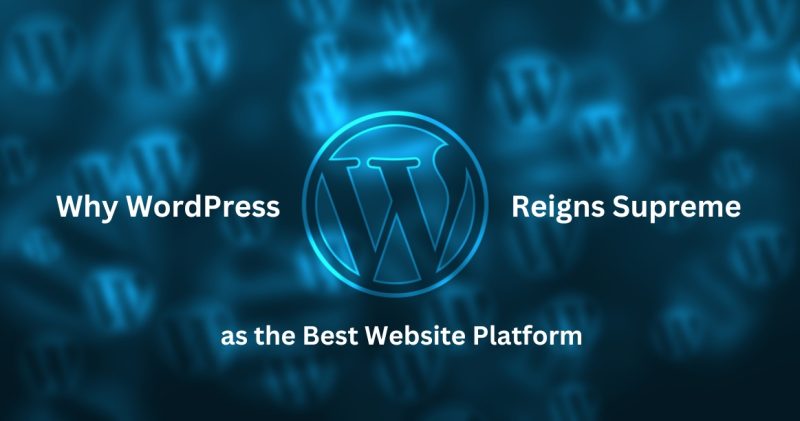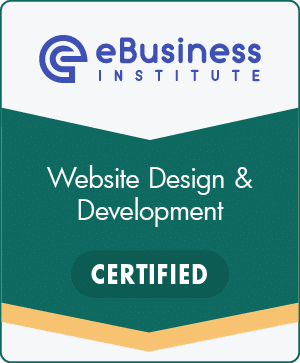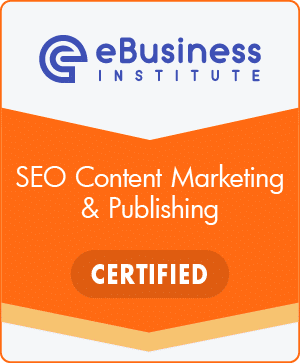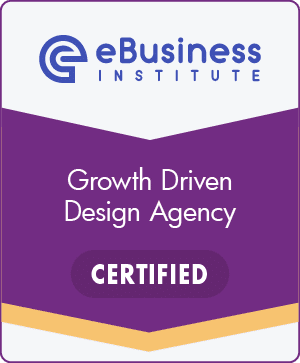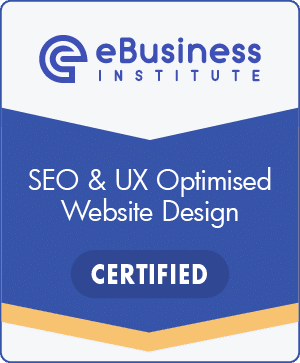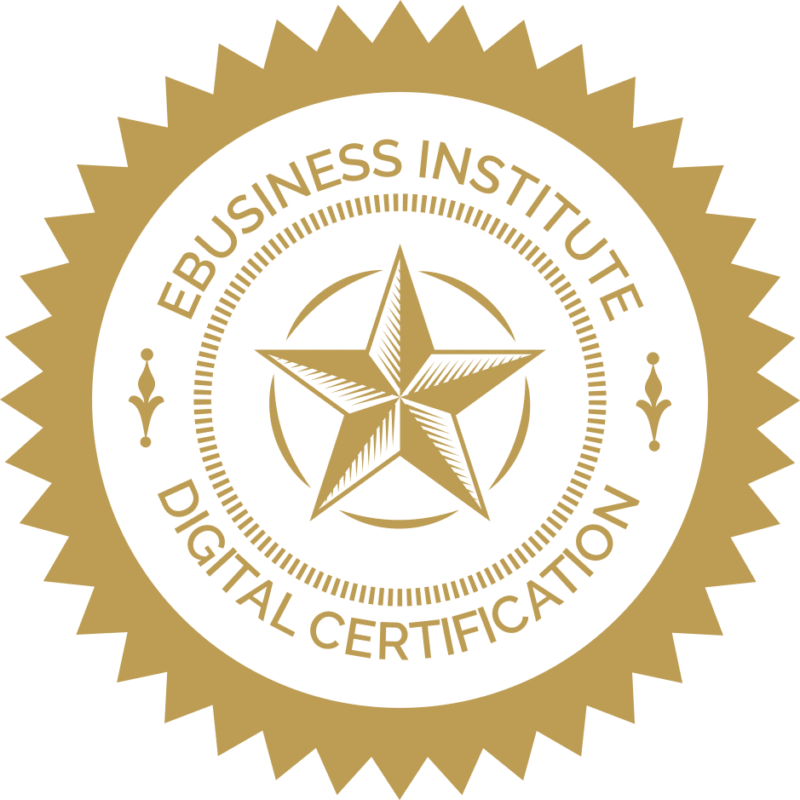In today’s world, if you want your business to grow and reach more people, having a professional website isn’t just nice to have; it’s a necessity. The best website design agencies make this happen. We experts know how to mix aesthetics with sales, navigation, psychology and more, making sure that people who visit your website like what they see and find what they need.
This guide was created to give you an overview of what’s needed to create a professional website that’ll help your business grow.
We hope it’ll do one of the following:
- Help you to create a website yourself that drives traffic and converts customers.
- Allows you to check if your current web designer/digital agency is pulling the wool over your eyes.
- Bring you around to the fact that sometimes it’s better to ask an expert to build a professional business website.
Whatever the case, we’ll be looking at everything from making your site look good on mobile devices to getting it to show up in Google searches. Let’s get started!
Establishing Your Online Presence
Why Being Online Matters
In today’s world, having a poorly ranked website (or no website at all) is almost like being invisible. Indeed, a website helps make your business accessible to anyone, anywhere, anytime. As such, it’s the heart of all your marketing, from blogs to Facebook posts and everything in between.
Show Off Who You Are
Your website allows the brand to tell its story. Using your logo, colour scheme, and style carefully can help the business demonstrate what makes it special compared to the competition. In turn, keeping the brand’s look consistent can help people remember and identify the business overall.

Designing for Success
When you’re building your website, think about it as if you’re setting up a physical store: how it looks, feels, and how easy it is for customers to find what they need. These factors all matter just as much online as they do in real life.
The Basics of Good Website Design
Good website design isn’t just about looking nice; it’s about creating a platform that’s easy to use and making sure visitors find what they’re looking for. Here are a few key points to keep in mind:
- Make it easy to read: Use clear fonts and colours that stand out from the background. Keep paragraphs short so that people can skim the text, if needed.
- Keep it simple: A cluttered webpage can quickly become overwhelming. Use space wisely to draw attention to the most important parts, helping guide users through the site.
- Focus on navigation: Imagine walking into a store with no signs and everything simply dumped in a single pile. You’d leave, right? Well, your website is no different; as such, it should have a simple menu at the top or side to guide visitors through the site easily.
Stories Sell
Your website should tell your story: who you are, what you do, and why you do it, all of which are vitally important. This approach can help build a connection with visitors. Use pictures and text to show the personality of your business.
- Showcase your products or services: Use high-quality images and detailed descriptions to highlight what you offer.
- Focus on the “about us” page: This is a great place to tell your story. Share your journey, mission, and the faces behind the business to your customers to build new connections.
Calls to Action (CTAs)
A CTA is a button or link that encourages visitors to take a specific action, such as “Buy Now” or “Contact Us.” Every page should have a clear CTA that guides visitors to the next step.
- Make them stand out: Use colours that contrast with the rest of your page so they’re easy to find.
- Keep it simple: Your brand’s call to action message should be clear and direct, so visitors know exactly what to do.
Mobile-Friendly Is a Must
More than half of all web traffic is on mobiles these days; as such, your site needs to work well on any device. This doesn’t just help people use your site better, either; it also helps your Google ranking. As such, adapting your website for a flawless mobile experience is non-negotiable in today’s digital landscape.
Smashing Magazine outlines the best practices for mobile web design, emphasising how critical catering to the increasing number of users accessing the web via smartphones is.
Everyone Should Be Able to Use Your Site
Making your site accessible means that everyone should be able to use it, even those with disabilities. To achieve this, your website could include features such as easy-to-follow menus and text descriptions for images. It’s the right thing to do from an inclusivity perspective, and it can also bring more visitors to your site.
SEO: Getting Found Online
SEO, or Search Engine Optimisation, is all about making your site easy for Google and other search engines to find and display to people. Here are a few tips on improving your site’s SEO:
- Keywords: Think about what search terms and phrases people are likely to type into Google to find your business. Incorporating these words naturally into your headlines and text can potentially help improve SEO-friendliness.
- Be mobile-friendly: Sites that work well on mobile devices typically rank better.
- Focus on loading speeds: If your site is slow to load, not only will visitors leave, but Google might lower your ranking – impacting your platform’s growth in the long-term.
Using SEO for Visibility
Imagine opening a store in a busy street that’s packed with other, similar stores. SEO is like the sign that draws people in, telling them you’re there, what you offer, and why they should visit.

Understanding SEO
SEO helps your website show up in search results when people look for the type of product or service you offer. This is crucial as part of your digital marketing approach, because the higher you rank, the more likely people are to find your website. Here’s how to make SEO work for you:
- Keywords: Think about what someone might type into Google to find your service or product. These are your keywords. Use them naturally in your titles, headers, and content.
- Quality Content: Google loves websites that offer plenty of valuable information. As such, aim to create helpful blog posts, guides, and FAQs to help your ranking.
- Site Speed: The speed of your website plays a critical role in user satisfaction and SEO rankings. Fortunately, Google offers plenty of insights on why performance matters and how improving site speed can significantly enhance the user experience, leading to better engagement and conversion rates accordingly.
Make Your Site Easy to Crawl
Google uses bots to “crawl” your site and index it. Brands can make it easy for them to complete these processes by having a clean structure, a sitemap, and clear navigation. This helps Google understand your site, making it much more likely to show up in search results.
Local SEO
If you’re targeting customers in a specific area, such as Hamilton, local SEO is key. Some common options here include adding your location to your keywords (e.g., “website design in Hamilton”), claiming your Google My Business listing, and getting listed in local directories.
Backlinks
When other reputable sites link to your website, this serves as a vote of confidence in your website. Backlinks tell search engines your site is valuable and trustworthy. Guest posts, partnerships, and being featured in articles are all valuable ways to help build backlinks.
Remember: SEO can be a long game. It takes time and consistent effort, but the payoff is worth it: more visibility, more visitors, and more potential customers finding your business.
Number 8 wire is amazing… but it’s not great at building an effective website, so if yours isn’t working as it should, get in touch to see how we can help attract leads for your business with personalised SEO services.
Content That Converts
Content is the heart of your website. It’s what tells your story, showcases your products, and provides value to your visitors. Below, we’ve outlined several key factors to help with creating content that not only attracts visitors but also turns them into long-term customers.
Crafting Engaging Content
Engaging content aims to solve problems, answer questions, and provide value in a way that’s easy and enjoyable to read. Below are a few things you should focus on:
- Know Your Audience: Understand who your customers are and what they need. Create content that speaks directly to their concerns, interests, and questions.
- Use a Variety of Formats: People consume content in different ways. As part of this, you should aim to provide blog posts, videos, infographics, and podcasts to reach a wider audience accordingly.
- Be Authentic: Share your brand’s story, values, and experiences. Authenticity builds trust and connects with readers on a personal level.
SEO and Quality Content Go Hand in Hand
While your content needs to be engaging and valuable to readers, it also needs to be optimised for search engines:
- Keyword Integration: Use keywords naturally in your content to improve their visibility in the search results.
- Headlines and Meta Descriptions: Aim to create compelling headlines and meta descriptions that encourage clicks, using your primary and secondary keywords to also help with SEO.
- Internal Links: Ideally, remember to link to other pages and posts on your website to help keep visitors engaged and allow search engines to crawl your site more effectively.
Content Marketing: Beyond the Website
Sharing your content beyond the website alone is crucial to reach a wider audience:
- Social media: Share your content on social media platforms, ideally in groups where your audience hangs out. Engage with your followers to build a community around your brand and encourage wider recognition of the business.
- Email Newsletters: Use email newsletters to share the brand’s latest content, news, and offers with subscribers. This offers a direct line to your audience.
- Guest Posting: Writing for other websites can serve as an excellent way to introduce your brand to new audiences, while also helping with backlinks for SEO.
Content is not just filling your website with words and pictures. It’s a strategic tool for attracting visitors, building relationships, and driving conversions. And, with the right approach, your content can become one of the business’s most valuable assets.

Enhancing Functionality and User Experience
E-Commerce Solutions for Online Sales
If your business sells products or services, integrating e-commerce solutions can be a great way to increase sales by making it easier for customers to buy. Here are a few options for making your online store more effective:
- Simplify the Shopping Cart: Always ensure your shopping cart is easy to use and navigate. A complicated process can increase the risk of cart abandonment.
- Payment Options: Where possible, try to offer multiple different payment methods to cater to different preferences. Several options include debit and credit cards, PayPal, and digital wallets, among others.
- Product Descriptions and Images: Use high-quality images and detailed descriptions to showcase your products. This helps customers make more informed decisions.
User Experience (UX) Matters
A good user experience should help keep people on your site for longer, thereby encouraging them to engage with the site more deeply. As part of this, try to focus on:
- Loading Times: A fast-loading website is crucial for business success. Try to compress images to reduce their loading times and minimise code to speed things up.
- Mobile Responsiveness: Ensure your site looks great and functions well on all devices, especially smartphones and tablets.
- Clear Navigation: When building your website, always focus the design on making it easy for visitors to find what they’re looking for with clear, intuitive menus and layouts.
Interactive Features to Engage Visitors
Interactive features can significantly enhance the user experience on your website. A few of the most effective and common options here include:
- Live Chat: Offer live chat support to answer your customers’ questions in real-time. This can increase conversions by providing immediate assistance when customers need it.
- Feedback Forms: Use forms to gather feedback from visitors. This not only engages them with the brand but also provides valuable insights for improvement.
- Social Media Integration: Embed social media feeds and share buttons to encourage visitors to connect with you on various platforms.
By focusing on these areas, you can create a website that not only attracts visitors but also provides them with a seamless and engaging experience that encourages them to return.
Building and Maintaining Trust
Trust is the cornerstone of any successful online business, and your website plays a crucial role in building this trust with your visitors. Here’s how you can use your website to establish credibility and foster trust:

Highlight Testimonials and Reviews
People trust other people’s opinions more than the brand’s direct claims. As such, showcasing customer testimonials and reviews prominently on your site can significantly boost your credibility. As part of this, you should focus on:
- Showcase Genuine Reviews: Use real testimonials from satisfied customers. If possible, include their names and photos to add authenticity. Never use fake reviews, as this is not only fraudulent and dishonest but can also damage trust in your brand.
- Product-Specific Reviews: Ideally, enable product reviews on your e-commerce pages. Prospective buyers find these invaluable when making purchasing decisions on specific products.
Focus on Security Measures
In an age where data breaches are not uncommon, ensuring your website is secure is non-negotiable. A few ways to protect your site and your customers include the following options:
- SSL Certificate: Use HTTPS to secure your website. This encrypts the data that is transmitted between your website and your visitors, protecting your customers’ sensitive information. For a deeper understanding of SSL certificates and their importance in website security, Cloudflare provides a comprehensive overview.
- Privacy Policy: Clearly state how you handle customer data in your privacy policy. Transparency about data usage builds trust. Always ensure your customers can find your privacy policy easily.
Professional Design and Up-to-Date Content for Trust
A professional-looking website and up-to-date content are excellent signs of an active, reliable business. Older websites can look dodgy and cause visitors to leave. Keep these points in mind:
- Use Consistent Branding: Keeping a focus on consistent branding across your website allows your brand to present a more professional image. This includes your logo, colour scheme, and typography (among other factors).
- Keep Content Fresh: Regularly update your blog, news section, and product pages. In many cases, outdated content can make visitors question your reliability.
Display Any Certifications and Awards
If your business has received any certifications, awards, or memberships from recognised industry bodies, be sure to display these prominently on your website. This not only showcases your achievements but also reinforces your authority in your field.
Remember: building trust takes time, but by implementing these practices, your website can lay a strong foundation for lasting customer relationships. In turn, your site becomes not just a place to shop or search for information but a space where visitors feel safe and valued.
Maintaining and Updating Your Website
To ensure your website continues to serve the business effectively, it’s crucial to keep it updated and well-maintained. This involves more than just adding new content; it’s about ensuring the entire website remains a dynamic and engaging resource for visitors.

Security and Backups
Keeping your website secure protects your business and its customers alike:
- Complete Regular Software Updates: Always keep your website’s software and plugins up to date to protect against vulnerabilities that may have arisen.
- Backups: Regularly back up your website to prevent data loss in the event of technical problems or security breaches.
Your website is a living part of your business that requires care and attention. By regularly updating, optimising, and maintaining your site, you can ensure that it remains an effective tool for connecting with your audience and achieving your business goals.
Monitor Website Performance
Your website performance directly impacts user experience and search engine rankings. As such, regular monitoring can help identify areas for improvement, such as:
- Page Speed: Use tools like Google PageSpeed Insights to test your website’s loading times and follow recommendations to improve speed.
- Broken Links: Check for and fix any broken links regularly (both internal and external). Broken links can frustrate users and may significantly harm your SEO efforts.
- Mobile Responsiveness: Regularly test your website on various devices to ensure it remains responsive and easy to navigate.
Managing the Technical
- Focusing on Technical SEO: Where possible, aim to review and optimise your website’s technical aspects, such as site structure and XML sitemaps, to improve search engine crawling.
- Reporting and Analytics: Tools like Google Analytics and Google Search Console will help you work out if all your pages are showing up on Google, if they’re engaging users and much more.
Website and maintenance can get technical.
FAQs
How often should I update my website’s content?
Regular updates are crucial. Ideally, try to aim for updates at least once per month to keep your content fresh and engaging for visitors and favourable for SEO rankings.
Is mobile responsiveness really that important?
Absolutely! With the majority of web traffic coming from mobile devices, a mobile-friendly website is essential for reaching a wider audience and improving your site’s SEO.
How can I improve my website’s loading time?
To improve your website’s loading time, optimise images, minimize CSS and JavaScript, and consider a content delivery network (CDN). Regularly test your site’s speed with tools such as Google PageSpeed Insights to get further insights into this. We wrote a great article on how to improve your website performance.
How can I tell if my website is secure?
Ensure your site uses HTTPS and always keep all software up to date. In addition, use strong passwords and consider additional security plugins or services to protect against common threats.
Can social media impact my website’s traffic?
Yes. Social media can drive traffic to your website and improve your online presence. As such, you should aim to share engaging content regularly and interact with your audience frequently to build a community around your brand.
What’s the best way to use SEO to improve my website’s visibility?
Focus on keyword research, quality content creation, on-page optimisation, and building reputable backlinks. SEO is a long-term strategy that requires consistent effort, but it can deliver long-term results if done correctly. You could try and learn how to do it yourself, or you could invest in professional SEO services to speed up the process.
Conclusion
Creating a professional website is not just about launching an online space for your business. It’s about crafting a digital experience that attracts visitors, engages them with quality content, and converts them into leads or customers.
From choosing the right domain to optimising your site for mobile users, every detail counts towards making your website a powerful tool for business growth. And remember, your website is an evolving platform. As such, regular maintenance, updates, and SEO efforts are essential to stay relevant and competitive in the digital marketplace. By applying the strategies discussed in this guide, you’re not just building a website; you’re setting the foundation for your business’s online success. But building a professional website requires effort, dedication, and a strategic approach. The rewards could transform your business through increased visibility, customer engagement, and growth, all of which are well worth it. So, get started today, and make your website a cornerstone of your digital marketing strategy.
